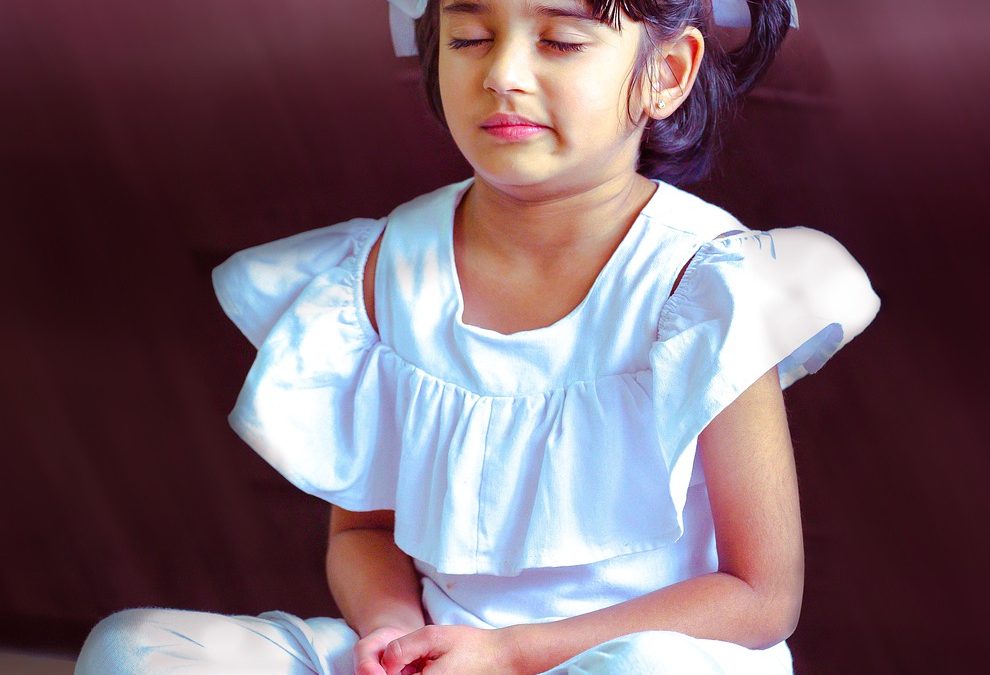 In today’s fast-paced world, it can be difficult for both adults and children to find a moment of peace and quiet. That’s where meditation comes in. Meditation is a technique that has been used for thousands of years to help calm the mind and body, reduce stress, and increase focus. And it’s not just for adults. Children can also benefit from learning to meditate. In this article, we’ll explore the benefits of teaching children to meditate and provide some tips on how to get started.
In today’s fast-paced world, it can be difficult for both adults and children to find a moment of peace and quiet. That’s where meditation comes in. Meditation is a technique that has been used for thousands of years to help calm the mind and body, reduce stress, and increase focus. And it’s not just for adults. Children can also benefit from learning to meditate. In this article, we’ll explore the benefits of teaching children to meditate and provide some tips on how to get started.
- Helps Manage Emotions – One of the primary benefits of meditation is that it helps to manage emotions. Children often struggle with intense emotions, such as anger, anxiety, or sadness, and may not know how to deal with them. By meditating, children can learn to recognize and regulate their emotions, which can lead to better emotional health and overall wellbeing.
- Improves Focus and Attention – Meditation is a great way to improve focus and attention. By teaching children to meditate, they can develop the ability to concentrate on tasks and pay attention to what is happening around them. This can be especially helpful in school, where students need to be able to focus on their work and ignore distractions.
- Reduces Stress and Anxiety – Stress and anxiety are common problems for both adults and children. Meditation has been shown to reduce stress and anxiety levels by activating the parasympathetic nervous system, which is responsible for calming the body and mind. By learning to meditate, children can develop coping mechanisms that can help them deal with stressful situations in a healthy way.
- Promotes Better Sleep – Getting enough sleep is crucial for children’s overall health and wellbeing. However, many children struggle with falling asleep or staying asleep. Meditation can help by promoting relaxation and reducing anxiety, making it easier for children to fall asleep and stay asleep throughout the night.
- Fosters Self-Awareness and Compassion – Meditation can also help children develop self-awareness and compassion. By meditating, children can learn to become more in tune with their thoughts and feelings, which can lead to greater self-awareness. Additionally, meditation can help children develop empathy and compassion for others, leading to a more positive outlook on life.
 Getting Started If you’re interested in teaching your child to meditate, there are a few things you can do to get started:
Getting Started If you’re interested in teaching your child to meditate, there are a few things you can do to get started:
- Keep it Simple – Start with short meditation sessions, around 5-10 minutes, and keep the instructions simple and easy to follow. This will help your child stay engaged and focused.
- Create a Relaxing Environment – Create a calm and relaxing environment for your child to meditate in. This could be a quiet room or a cozy corner with comfortable pillows and blankets.
- Use Guided Meditations – There are many guided meditations available that are specifically designed for children. These can be a helpful tool for teaching your child how to meditate.
- Be Consistent – Consistency is key when it comes to meditation. Try to set aside time each day for your child to meditate, even if it’s just for a few minutes.
Teaching children to meditate can have a profound impact on their overall health and wellbeing. By helping them manage their emotions, improve focus and attention, reduce stress and anxiety, promote better sleep, and foster self-awareness and compassion, meditation can be a powerful tool for helping children navigate the challenges of growing up. If you’re interested in teaching your child to meditate, start with short, simple sessions in a calm and relaxing environment and be consistent with your practice.


 Getting Started If you’re interested in teaching your child to meditate, there are a few things you can do to get started:
Getting Started If you’re interested in teaching your child to meditate, there are a few things you can do to get started:
Recent Comments